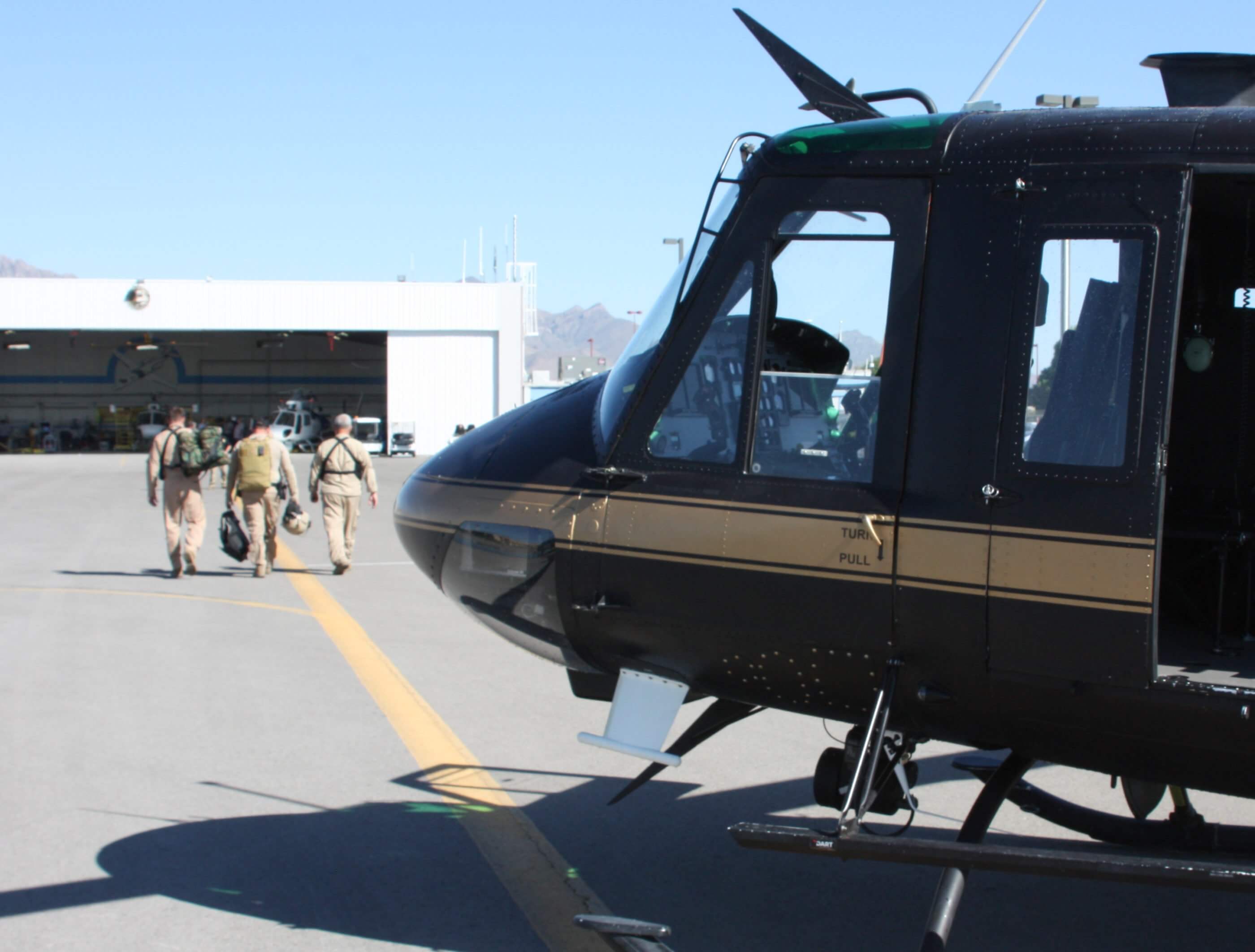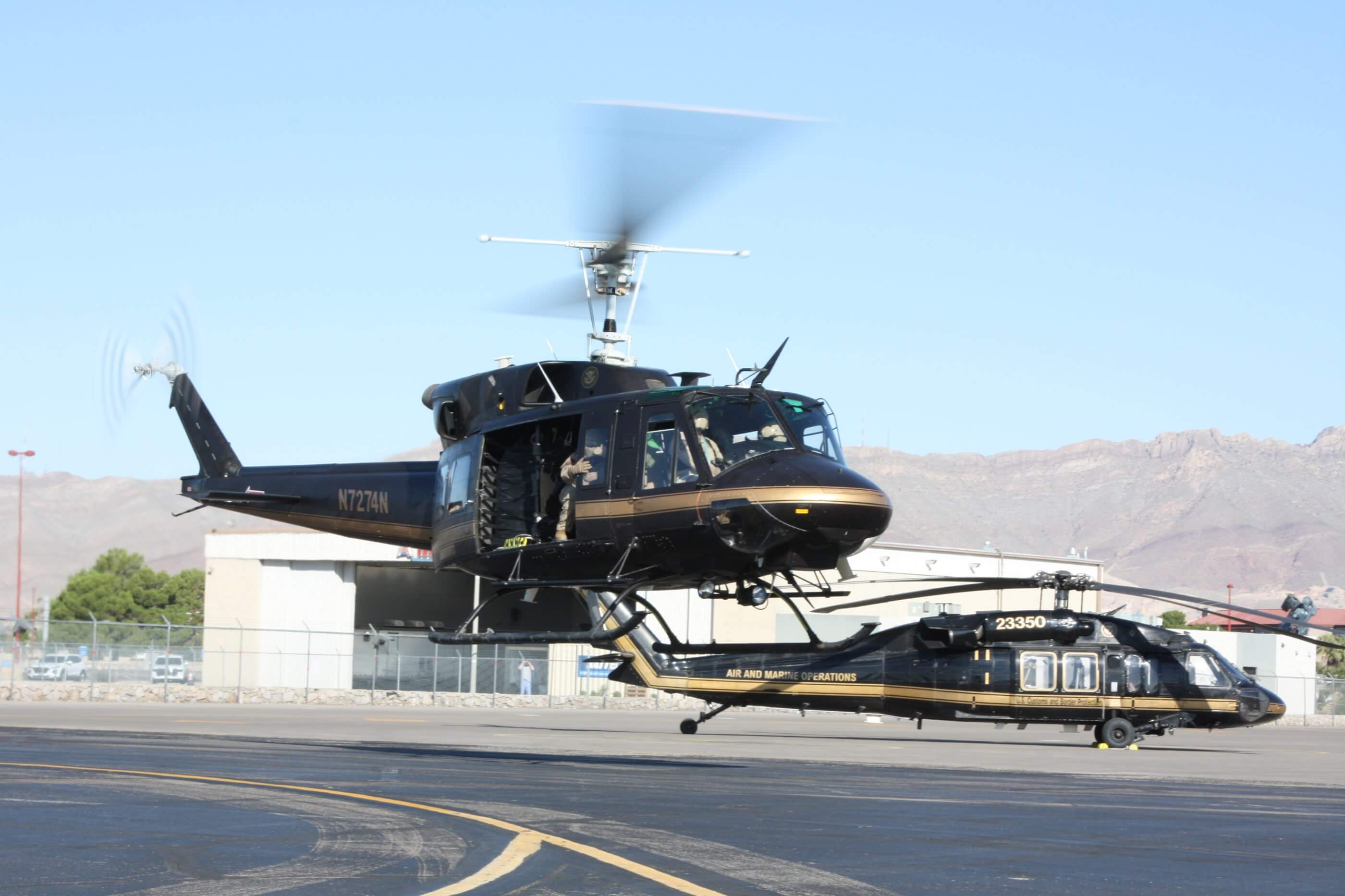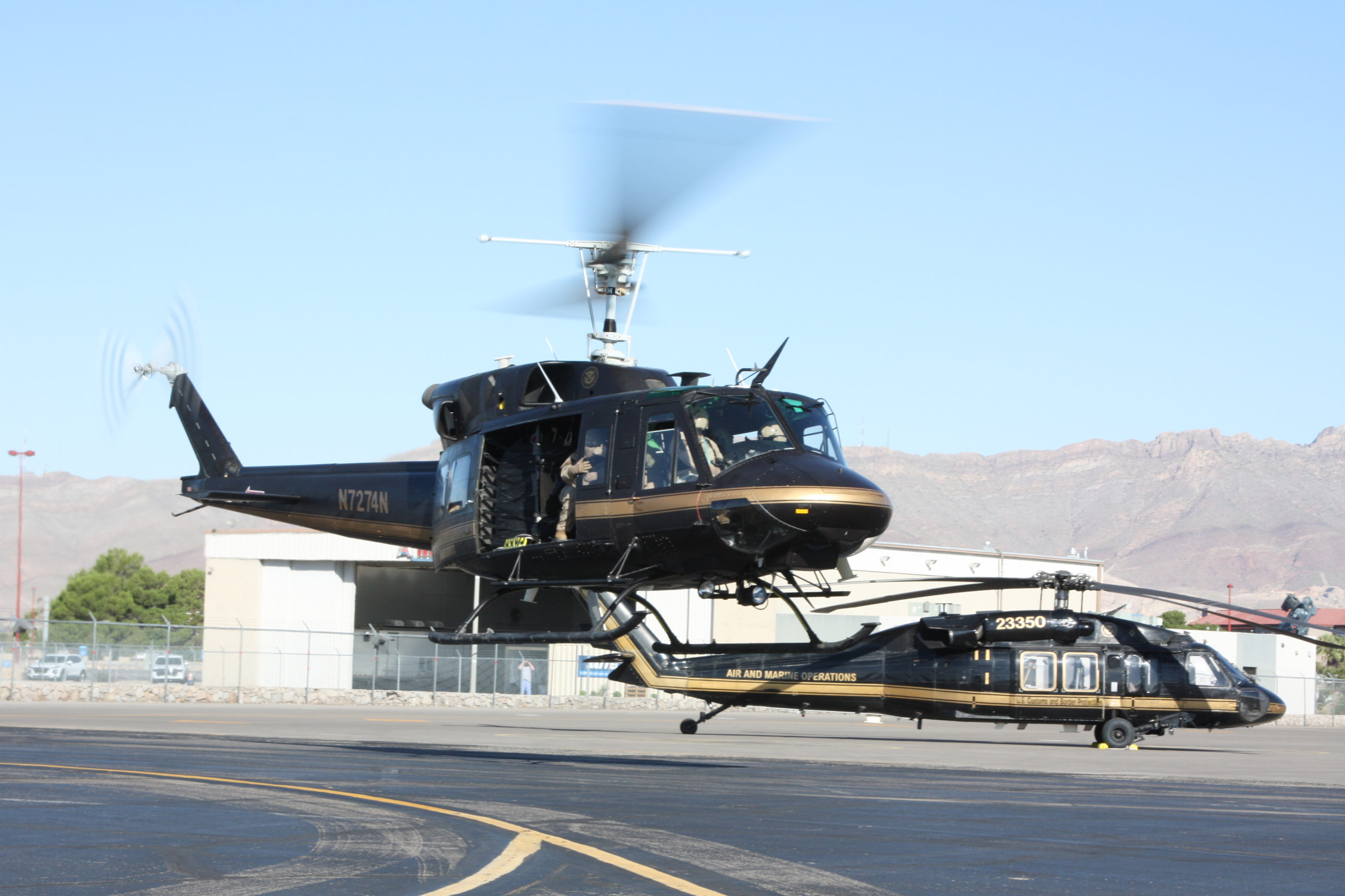On July 21, just outside of Las Cruces, New Mexico, a U.S. Customs and Border Protection (CBP) Bell UH-1N helped locate and rescue two hikers lost along the mountainous Organ Needle Trail.
And with that successful mission, the last UH-1 in operation with CBP performed its final official mission and headed for retirement. Eight days later, CBP’s Air and Marine Operations (AMO), El Paso Air Branch, using that same aircraft, conducted the final flight of the UH-1N helicopter for the agency.

“It went up there and searched around and we were able to coordinate the locations of search-and-rescue personnel to the people who were lost,” El Paso Air Branch Director John Stonehouse told Vertical in a recent interview. “They had been out there for about a day and overnight. That was the last official mission the Huey went on. So, it was nice to see it go on one more official mission.”
For its farewell flight, the aircraft soared over El Paso, touring its final official home with CBP. It then came back down the taxiway at the city’s international airport, where the resident fire engines saluted with arcing jets of water.
“The UH-1 November model that we had really allowed us to move multiple people in and out of situations, to get into areas that were maybe higher and hotter than our smaller aircraft could get into,” Stonehouse said. “We’re specifically talking about a law enforcement role where we have to deploy personnel or a rescue role where we are trying to recover additional personnel.”
“Those rescues could be officers or agents that are down, U.S. citizens that are lost or illegal migration where people have been injured or lost in specific areas that require immediate medical attention,” he said.
Flying from El Paso, CBP Hueys spent most of their time operating in the rugged, remote Big Bend Sector, which spans 135,000 square miles (350,000 square kilometers) over 118 counties in Texas and Oklahoma and includes Big Bend National Park, Stonehouse said. Four of the unit’s five UH-1Ns deployed to major hurricane relief efforts, including responding to massive flooding in Houston in the aftermath of Hurricane Harvey in 2017.

The twin-engine, medium-lift UH-1N has been in operation with AMO since Feb. 10, 2015, and was intended as a short-term asset to bridge the gap of medium-lift helicopter capabilities, as AMO initiated the UH-60 Service Life Extension Plan. With that program underway and the recent approval to standardize the medium-lift helicopter fleet to the UH-60, the UH-1N served its purpose in keeping AMO’s capabilities viable.
“It really has proven its value, even though it is older and it’s outdated in terms of what it can do,” Stonehouse said. “We used the UH-1 really as a stopgap capability to get to a standardized medium-lift fleet, which is in alignment with our 2030 vision and strategy.”
The fleet of N-model Hueys are all former U.S. Marine Corps aircraft retired between August 2010 and September 2012 and subsequently upgraded to meet AMO requirements. Upgrades included a new communications suite, glass cockpit displays, new wire-strike kit, high-skid landing gear and tail boom and rotor modifications. The Pratt & Whitney Canada PT6T-3 engine received electrical and fuel system upgrades and installation of extended exhaust deflectors. Each aircraft received the $1.3 million upgrade to AMO standard by Rotorcraft Support Inc. of Van Nuys, California.
Since 2011, the UH-1Ns and older model Hueys have operated more than 8,000 hours, contributed to seizure of approximately 16,700 pounds of marijuana and 35 vehicles, contributed to the arrest or apprehension of 245,862 individuals, and were involved in the rescue of 152 individuals.
The five UH-1Ns will be auctioned by the General Services Administration in August. Funds generated will be returned to the AMO operating budget and immediately applied to sustainment of the UH-60 Black Hawk fleet, which will replace the UH-1N along the southern border and is in use across the continental United States and Puerto Rico.
The Hueys will be replaced with two UH-60A+ Black Hawks and one Lima-model equipped with external hoist capability. A single UH-60A is currently in operation with the second scheduled for delivery later in 2020. The UH-60L is scheduled for delivering in April 2021, Stonehouse said.
All three helicopters will come from the U.S. Army. Hoisting is “extremely important” along the southern U.S. border’s mountainous terrain, Stonehouse said.
“A lot of people don’t realize, they think El Paso is flat, but we’ve got some big mountains up here,” Stonehouse said. “Plus, our [area of responsibility] extends down into Big Bend, where there’s a lot of beautiful mountains. It’s a gorgeous area that we have and we patrol and we get to work in every day, but it does have its environmental challenges.”
Once CBP zeroes its fleet with UH-60s, the entire aviation wing of the agency will have a standardized medium-lift capability optimized for emergency response at long range, Stonehouse said.
“The UH-60, the benefit it brings, we can haul twice the personnel; we can go twice the distance and about 40 percent faster than we can versus the UH-1,” Stonehouse said. “Of course, anytime you standardize a fleet, training costs come down, operating costs come down and the interoperability across the nation really goes up.”









